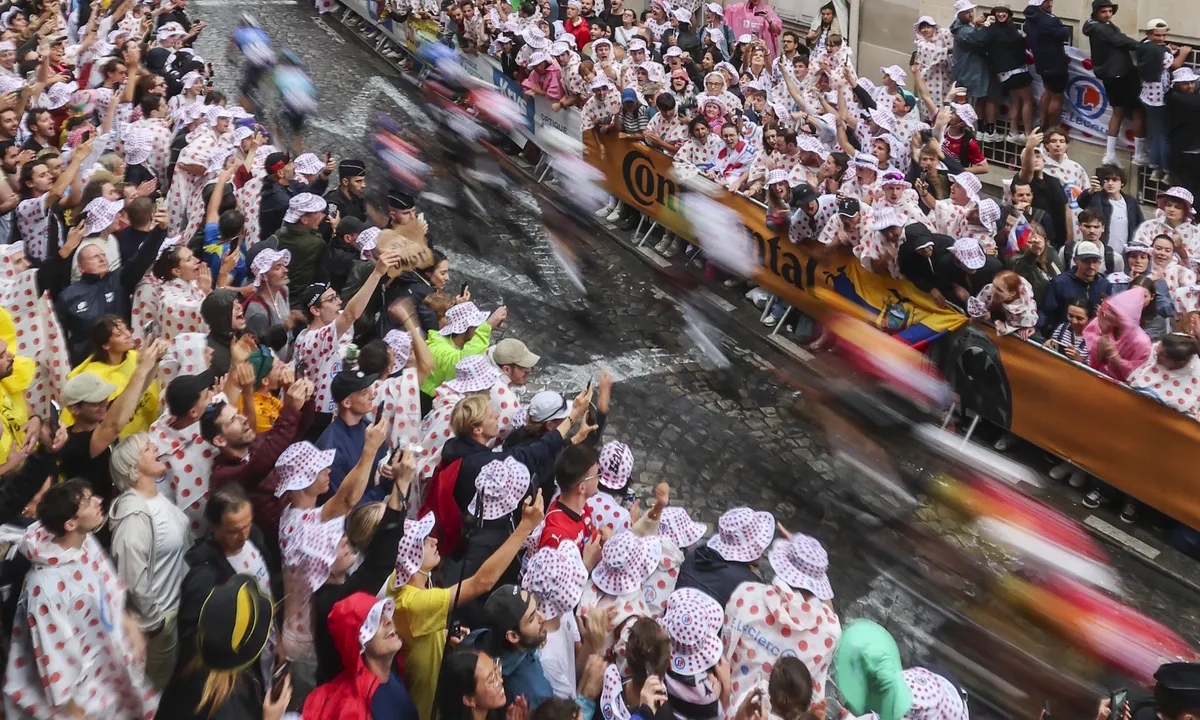
As the sun rises on the final stage of the Tour de France, I embark on a journey to explore the newest climb on this year’s race parcours—the Col de la Butte Montmartre. Arriving hours before the race begins, I find myself walking the length of this challenging ascent while thousands of enthusiastic fans crowd the barriers. Some lucky spectators enjoy the view from café tables or second-floor apartments, while the majority stand in anticipation, eager to witness how the riders tackle this unique Parisian challenge.
Two-thirds of the way up the climb, a group of spirited French supporters begins to sing, building to a crescendo before launching a freshly baked baguette across the course. A corresponding fan on the opposite side takes a hearty bite, throwing it back and forth until the beloved loaf vanishes amidst raucous laughter and cheers. The atmosphere is electric, embodying the essence of cycling culture in Paris.
Paris has always been the grand finale of the Tour de France, except during Olympic years. Typically, the final stage is a celebratory parade, where riders, mechanics, and journalists alike are exhausted after three weeks of intense competition. They collectively yearn for a long sleep, but this year’s stage promises more than just leisurely laps around the iconic Champs-Élysées; it presents a true challenge for the cyclists with the Montmartre climb.
Traditionally, the final stage serves as a champagne toast on wheels, where riders take turns showcasing their classification wins before the peloton arrives in the city. However, the newly introduced Olympic road-racing circuit, which includes the twisting cobbled ascent of Montmartre, has transformed the final stage into a thrilling contest rather than a mere celebration. This climb is challenging enough to create meaningful separations but not so grueling as to resemble a mountain stage, ensuring that the excitement remains palpable.
The atmosphere on Montmartre is unlike anything else, with fans pressed against the riders during this Belgian-classic style climb in the heart of cycling’s home city. The organizers decided to neutralize potential General Classification (GC) battles, allowing for a more dynamic, one-day racing style. Yet, the question lingered: would the climb be significant enough to disrupt the sprinters' plans? As it turns out, it did—much to the dismay of the sprinters.
As I ascend the climb, I encounter a man dressed as a Smurf offering me champagne, while a young family with a Hungarian flag requests a photo. Each group of fans I focus on instantly heightens their enthusiasm, creating an unforgettable ambiance. However, as the riders approach, a sudden downpour soaks the scene, but it doesn't dampen the spirits of those gathered.
After leaving Montmartre, I make my way to the Champs-Élysées to soak up the atmosphere, albeit without my poncho. The logistics of the Tour de France have closed Metro stations and caused a bit of chaos, but many locals continue with their daily errands. Meanwhile, the Champs is occupied by VIPs enjoying exclusive access to sheltered areas with plenty of champagne and barrier-side bleachers. As a member of the press, I find my spot along the barriers further up, ready to witness the thrilling finale.
As the rain intensifies, my crew and I seek refuge in an underground parking garage, watching the race unfold on a phone until the cyclists approach. In the excitement of the moment, a man slices a leg of jamon serrano in front of a truck, adding to the festival-like atmosphere. The buzz among riders and staff suggests that Tadej Pogacar will make his presence felt on Montmartre, and he does just that during the first ascent.
Pogacar’s initial move splits the peloton, showcasing the technical challenges of the narrow climb and wet cobbles. By the time the riders reach the second ascent, a select group of six remains, ensuring that the final lap on Montmartre will be crucial. Matteo Jorgenson heroically leads the charge for Wout van Aert, strategically wearing down Pogacar before the final push.
When Pogacar makes his move, van Aert responds with a powerful surge, leveraging every ounce of energy to cross the summit first and sprint towards a sweet victory on the Champs-Élysées. Although Pogacar puts in a commendable effort, he cannot keep pace with van Aert, who embodies the thrill of cycling as a charismatic and versatile winner. The crowd erupts as van Aert crosses the line, a moment that feels both electrifying and poetic.
As I reflect on the day, I realize the magic of the Tour de France lies in its unique blend of pain and joy for everyone involved. Even as the race can be grueling for the participants, the camaraderie and excitement create an unforgettable experience for fans and competitors alike. Conversations at the end of the day often conclude with, “See you next year!”—a testament to the enduring love for this extraordinary event.
Later that night, I ride my bike home down the still-closed Champs-Élysées, savoring the final moments of this incredible race. The boulevard, with its sweeping vistas, is a perfect venue for a bike race, and I can hardly believe how the finale has managed to elevate the magic of the Tour de France to new heights.